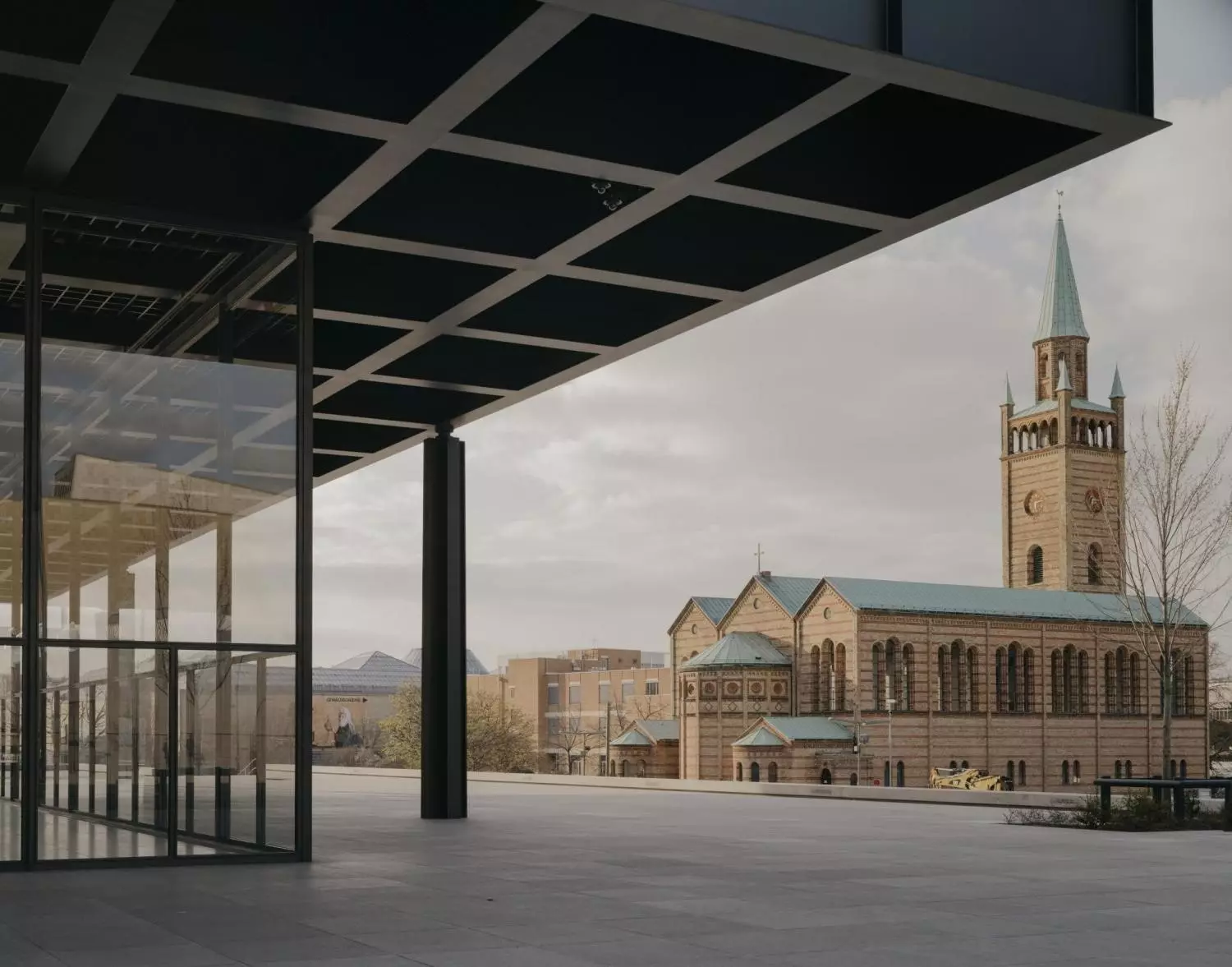
Here is a jewel of late modernism
The Neue Nationalgalerie Berlin , one of the great landmarks of 20th century architecture reopens its doors after six years of reforms.
projected and built between 1963 and 1968 , the iconic steel and glass structure, designed by Ludwig Mies van der Rohe, it had taken a beating after nearly fifty years of heavy use.
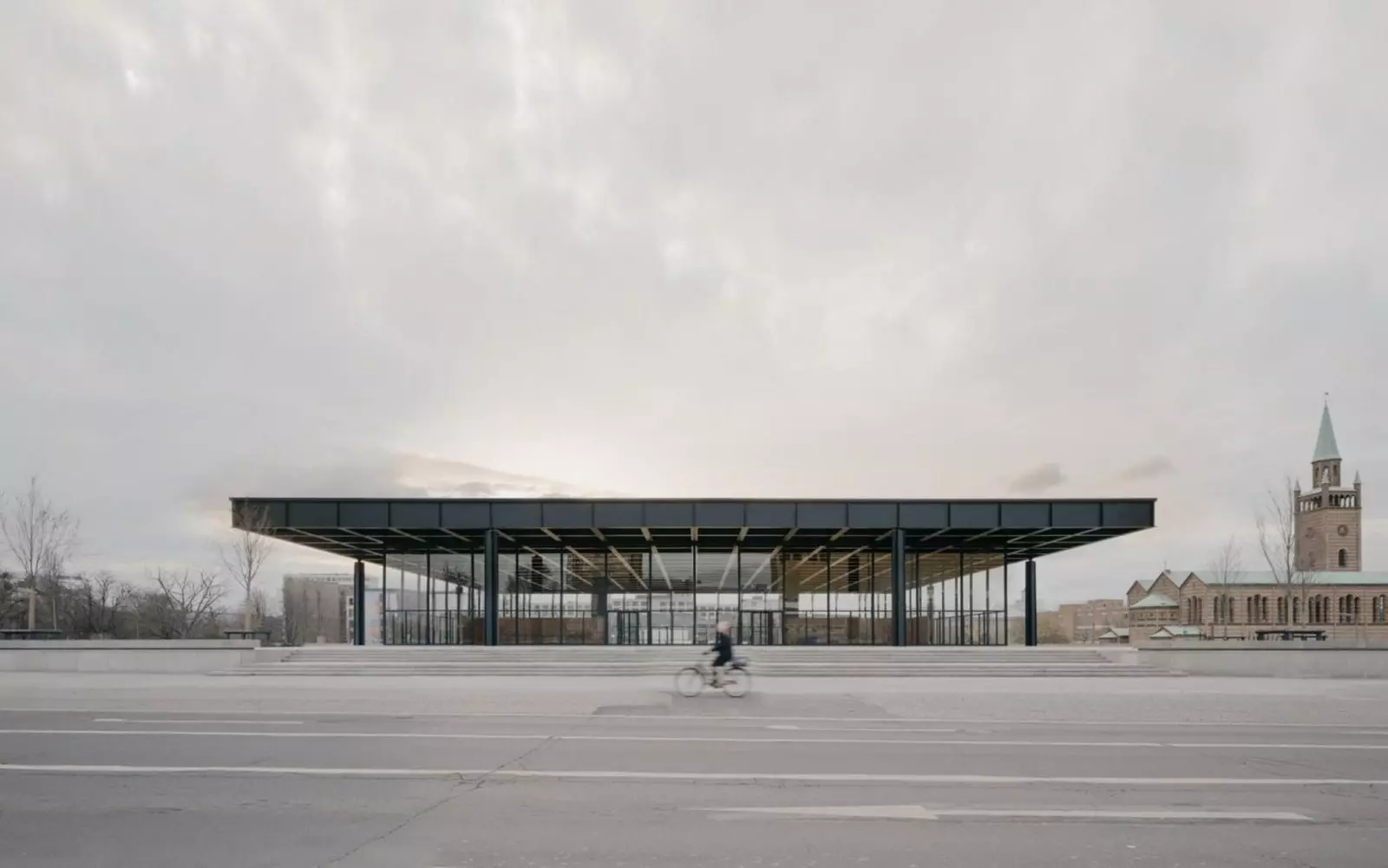
The Neue Nationalgalerie is reborn from its ashes
This comprehensive remodeling, which required an extensive repair of the concrete frame , has been the work of the study of British architect David Chipperfield, who has not lost the visual commitment to the original appearance of the construction.
Although Berlin State Museums remain closed from last April 24 , David Chipperfield Architects Berlin has handed over the keys to the art temple to the Prussian Cultural Heritage Foundation (SPK) at a digital event.
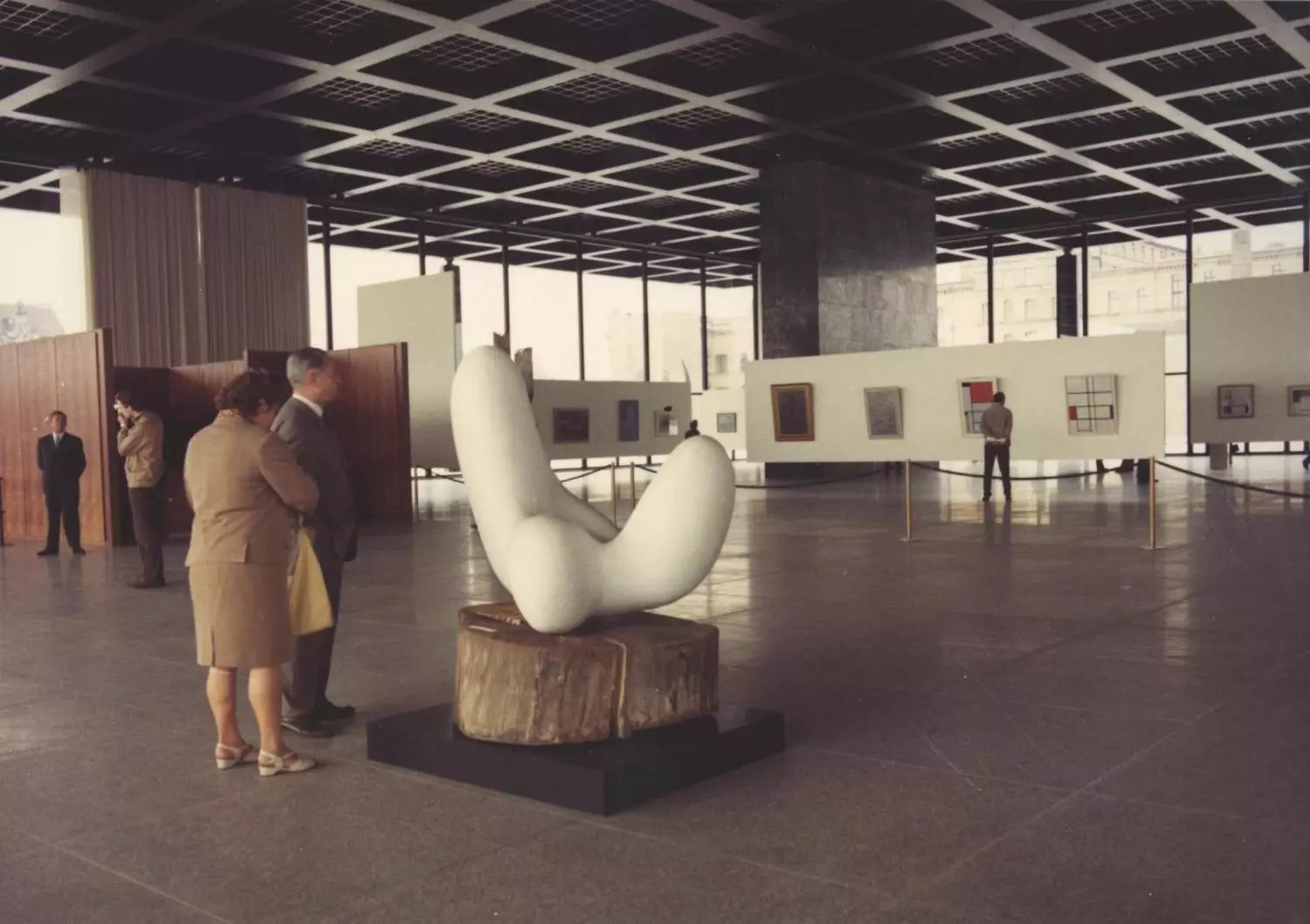
The building was inaugurated in 1968
For the first time since its inception, the Neue Nationalgalerie will offer barrier-free access thanks to new ramp found on the southeast stairway of the podium and allows access to both the large terrace and the main entrance.
Major interior upgrades include HVAC, artificial lighting, security and visitor facilities -see the cloakroom, the cafeteria and the museum shop-, as well as the improvement of access for the disabled and the handling of works of art.
It has not been an easy task to find a balance between the conservation of the monument and the use of the building as a modern museum. Though contemporary elements can be seen , the rehabilitation project does not represent a new interpretation , but a repair of the same, for which Some 35,000 original components were dismantled.
"Disassemble a building of such unquestioned authority It has been a strange experience but a privilege. Seeing past his exterior has revealed both his genius and his flaws, but overall he has done little more than deepen my admiration for Mies's vision. Our work was therefore surgical nature addressing technical issues to protect this vision," declared David Chipperfield.
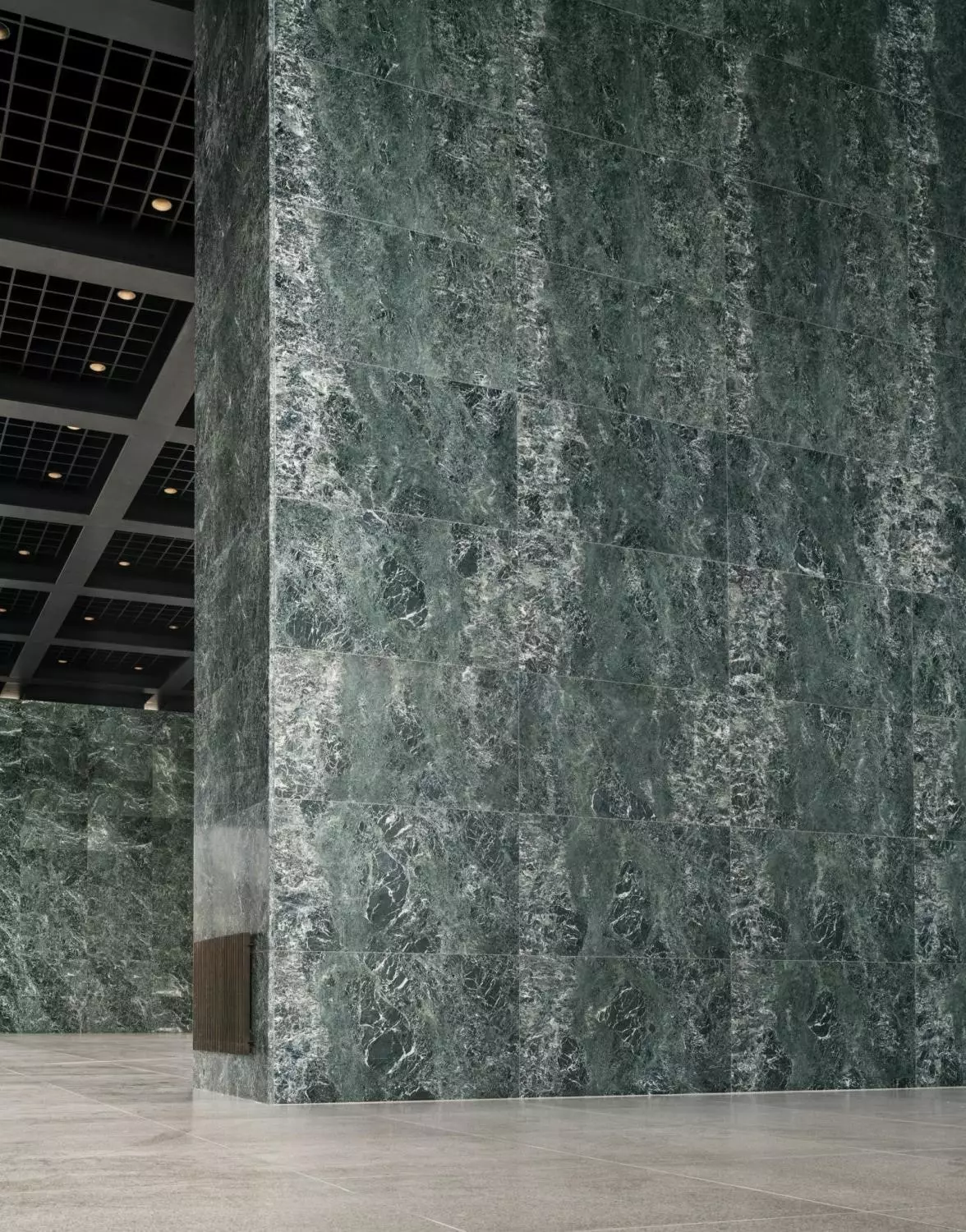
Contemporary elements respect the essence of the construction
And it is that, as Chipperfield affirms, the objective was to give the building a new life , preserving its original function as a **museum and venue for special exhibitions. **
After 50 years of use, the characteristic steel and glass facade of the Neue Nationalgalerie had reached critical condition due to structural defects. facts like corrosion around the glass support bars , as well as the resulting broken glass, had endangered the safety of the public. This is because Mies van der Rohe lent more attention to appearance and proportions than to utility.
On the other hand, the granite wall of the Berlin museum was one of the first natural stone ventilated facades installed in Germany . For this reason, after various checks of their status, the granite slabs in its original position.
In turn, special attention was also paid to cleaning them: severe dirt and darkening of the surface , reddish-brown discoloration, biogenic growth, and surface protection that had been applied incorrectly were removed without damaging the materials.
"It was about preserve the aura and not to restore an image. The rehabilitation of the Nationalgalerie fundamentally accepted the aging and traces of use in the fabric of the existing building, as long as they did not harm its appearance and its usefulness" , pointed alexander schwarz , Partner and Design Director of David Chipperfield Architects Berlin.
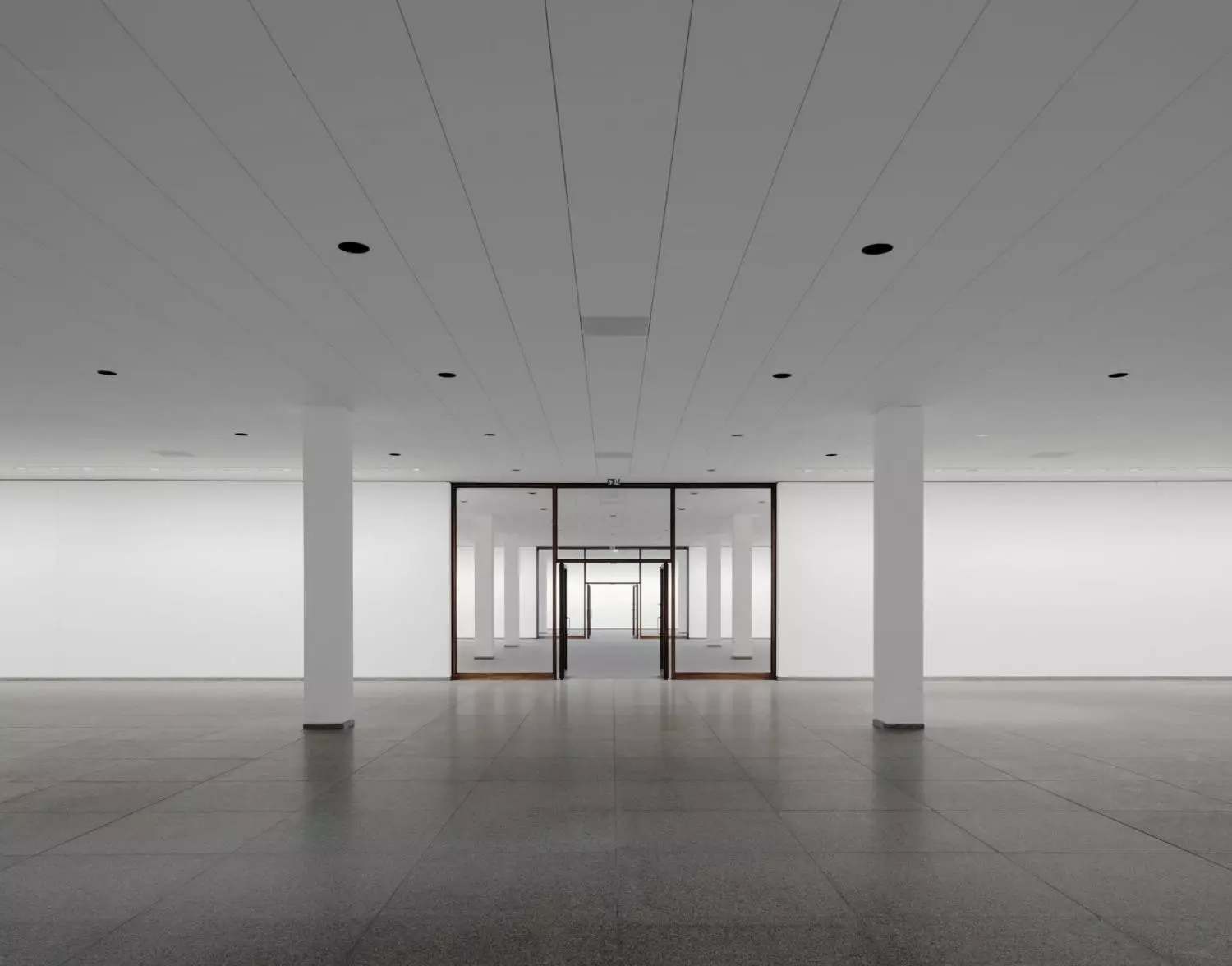
LED technology has been incorporated to reduce energy consumption
In short, the perfection of the baptized as "temple of modernity" hardly allowed room for manoeuvre, so the construction measures focused on the general revision of the structure in the elimination of toxins and achieving current technical and energy standards , as far as possible.
While items like the freight elevator and curtain technology of the exhibition hall have been preserved as technical heritage, the modular false ceilings in the basement, the lighting of the spaces through ceiling lights, the warm tone of the artificial light, the design of the bathrooms, the wood chip wallpaper together with the carpeted floor in the collection rooms and the flexo tiles in the back room area have refreshed the image of the museum.
Thanks to the reuse and conversion of old technical spaces, it was possible to create a contemporary exhibition area and additional storage rooms.
A clear example of this is the lower floor, which has been reconfigured to improve access to public areas such as the services, the museum shop, the cloakroom and the bookstore , as well as warehouses have been expanded of paintings and sculptures.
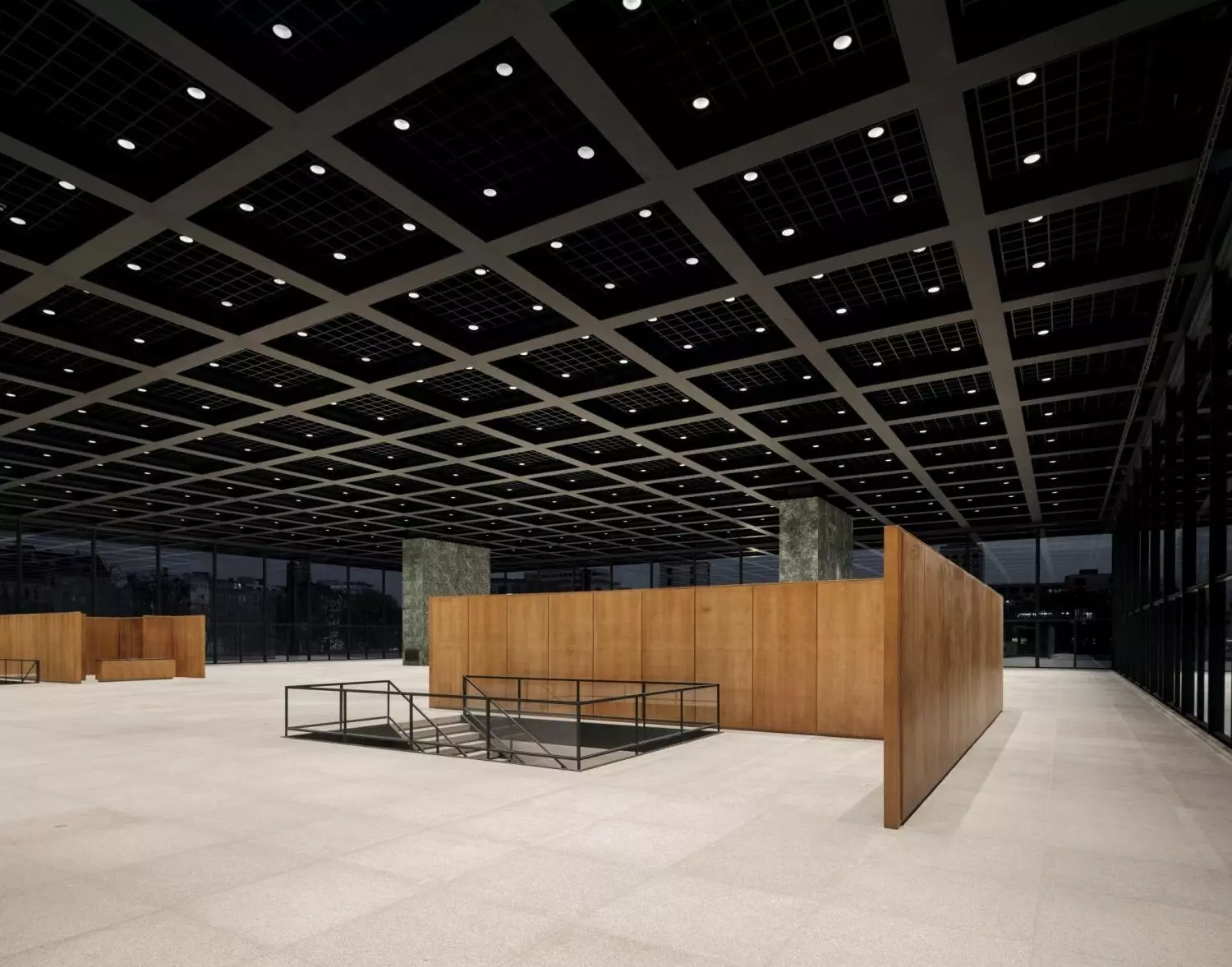
The space has additional storage rooms
"This project has been exceptional. in many aspects: the intensity with which seemingly marginal issues were discussed, the high degree of appreciation for the material fabric of the building, the differentiated assessment of different interests and concerns, as well as the explicit message that after the completion of the works there is nothing more than seeing a great work of late modernism, which has been restored with great care", explained Martin Reichert , partner and managing director, David Chipperfield Architects Berlin.
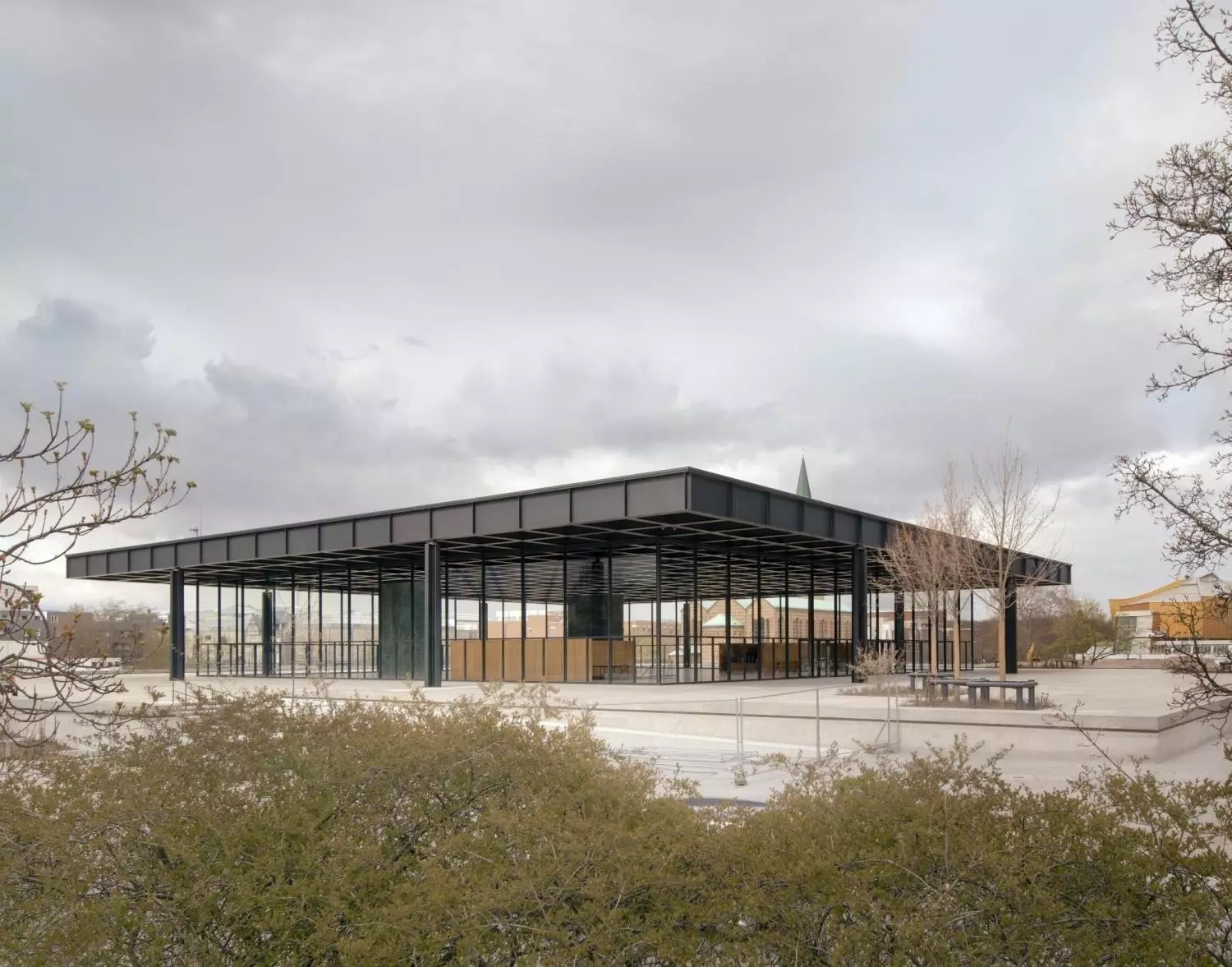
At the moment, the museum remains closed due to city restrictions
Finally, it should be noted that the hazardous materials used during the construction of the building in the 1960s, including asbestos and artificial mineral fiber have been eradicated , which flattens the path to sustainability.
Among other modifications that ensure respect for the environment, LED technology has been incorporated into the building to reduce energy consumption.
